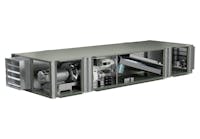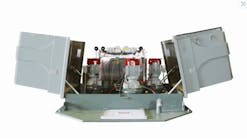Citing U.S. Drought Monitor data, Waterless Co., manufacturer of no-water urinal systems, recently reported nine urban areas in the United States are under “exceptional drought” conditions and may experience widespread crop damage, more severe water restrictions, and water emergencies in coming months.
Of four rankings, “exceptional drought” is the most serious and typically applies “to areas that have had prolonged and persistent drought for several months, if not years,” Klaus Reichardt, founder and chief executive officer of Waterless Co., said.
According to the report, conditions are so serious in these nine locations that even a significant rainfall event is likely to have only a marginal impact.
“These areas need multiple rainfalls in order to raise water tables and begin to fill reservoirs,” Reichardt said.
As of August 2013, the U.S. cities with the most serious water problems are:
• Santa Fe, N.M.
• Albuquerque, N.M.
• Corpus Christi, Texas.
• Brownsville, Texas.
• Harlingen, Texas.
• Colorado Springs, Colo.
• McAllen, Texas.
• Pueblo, Colo.
• Lubbock, Texas.
Most of these cities have voluntary, if not mandatory, water restrictions, such as limitations on watering lawns, washing cars, and filling swimming pools, in place.
“The smaller communities are in the most serious predicament,” Reichardt said, “because they typically only have one water source. If that lake or reservoir goes dry, which may happen in certain areas, that’s all they have.”
There are signs water conditions in New Mexico will improve. However, conditions in Colorado and southern Texas are expected to persist and even get worse at least into the fall.








